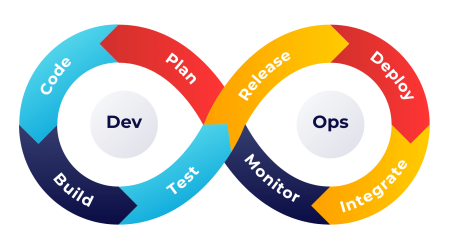From Job Post to Offer Letter: Best Practices for Rapid Hiring
Hiring quality candidates quickly is no longer a luxury it’s a necessity that can make or break a business’s success. Best Practices for Rapid hiring ensures businesses stay agile, meet tight deadlines, and remain competitive in their respective industries. This blog will help you explore effective rapid hiring strategies, why they’re crucial for your business, and how remote hiring plays a significant role in accelerating your recruitment process.
Why Businesses Need Rapid Hiring
The hiring landscape has transformed significantly over the past few years. With businesses expanding operations, adopting remote work environments, and navigating a highly competitive labor market, traditional recruitment pipelines are struggling to keep up. Rapid hiring is the solution to scaling your recruitment process without compromising on candidate quality.
It’s also an effective way to identify candidates with hard-to-find experience and specialty skills, ensuring your team has the expertise it needs. From niche technical roles to industry-specific knowledge, rapid hiring helps you fill critical gaps efficiently.
When businesses adopt rapid hiring practices, they:
- Reduce time-to-fill vacancies by streamlining the recruitment process.
- Minimize workflow disruptions caused by unfilled roles.
- Capture top talent before competitors do.
- Respond effectively to seasonal workforce demands or sudden market changes.
Rapid hiring is no longer just about filling roles—it’s about creating a hiring plan that aligns with your organization’s goals and drives performance.
Effective Ways to Implement Rapid Hiring

To master rapid hiring, businesses must incorporate targeted strategies and tools into their recruitment practices. Below are some proven methods to streamline recruitment processes and hire efficiently:
1. Develop a Clear Recruitment Plan
Planning is at the heart of rapid hiring. A student recruitment plan or a hiring plan sample can serve as a template to outline the roles you’re hiring for, the skills needed, and the timeline for each hire. Incorporating a checklist for recruitment ensures that nothing is overlooked.
Recruiting and staffing are key to building a strong team and driving business success. It’s about finding the right talent with the skills and mindset to fit your goals. Streamlined hiring processes ensure efficiency and better outcomes.
Here’s what an effective recruitment plan should include:
- Thorough job descriptions outlining role expectations.
- Pre-defined interview processes to minimize delays.
- A set timeline to complete every stage of hiring, from applications to onboarding.
2. Use Technology and AI in Recruitment
Applicant Tracking Systems (ATS) and AI-driven tools simplify rapid hiring by automating repetitive tasks, such as resume screening and interview scheduling. Platforms such as Workable and Greenhouse offer features that improve efficiency, enabling recruiters to focus on connecting with the best candidates.
3. Use Pre-Screening Assessments
To ensure quality while hiring quickly, use pre-screening assessments. These tests evaluate candidates’ technical skills, behavioral traits, or problem-solving abilities before the interview stage. Tools like TestGorilla or Codility can save you hours of evaluating resumes.
4. Nurture a Pre-Qualified Talent Pipeline
A pre-qualified talent pipeline ensures you’re not starting from scratch each time a role opens up. By maintaining connections with quality candidates from previous hiring rounds or industry events, you can instantly tap into this source when a position becomes available.
5. Optimize Job Postings for Your Audience
Craft job postings using targeted keywords like “rapid hiring jobs” or “quick recruitment strategies” to attract candidates searching for precisely those opportunities. Make sure the postings are distributed across multiple channels—social media, job boards, and even email campaigns.
6. Embrace Remote Hiring
Remote hiring is instrumental in rapid hiring. It expands your reach beyond geographic boundaries and offers access to a larger talent pool. Video interview platforms, virtual onboarding tools, and remote collaboration technologies enable businesses to conduct seamless, fast hiring processes without in-person interactions.
Pro Tip: Highlight remote hiring in your job ads to attract candidates actively seeking flexibility.
How Rapid Hiring Helps Businesses Thrive
Adopting rapid hiring practices can drive significant improvements across multiple facets of your business. Here’s how rapid hiring can help organizations:
- Boost Productivity: Quickly filling talent gaps ensures projects stay on track and teams remain productive.
- Lower Costs: A streamlined recruitment process reduces administrative overhead and saves valuable resources.
- Improve Candidate Experience: Fast, efficient hiring processes create a positive impression of your company and improve the overall candidate experience.
- Enhance Agility: Rapid hiring allows businesses to respond quickly to changes in demand, whether launching a new product or expanding a team.
Rapid hiring doesn’t only benefit the company—it also provides an edge in the competitive job market. Candidates are more likely to accept an offer when they experience a fast and professional recruitment process.
The Role of Remote Hiring in Rapid Recruitment
Remote hiring is an essential component of modern rapid hiring strategies. With advancements in workplace technology, businesses can use remote hiring to broaden their reach, reduce time to hire, and access top talent from virtually anywhere in the world.
Here are some key benefits of integrating remote hiring into your rapid recruitment efforts:
- Flexibility: Candidates can participate in interviews from their preferred locations, leading to quicker scheduling.
- Reduced Time-to-Onboard: Remote onboarding processes using tools like BambooHR or WorkBright enable faster integration of new hires.
- Access to Specialized Talent: Remote hiring opens up new opportunities to recruit candidates with specific skills or experience who may not be available in your local area.
By effectively blending rapid hiring and remote recruitment, businesses can create an agile hiring process that remains resilient, even amidst global shifts like the transition to remote work.
At the same time, using staffing and recruiting solutions for industries ensure you find the right candidates with the specific skills your sector demands. From healthcare to technology, effective recruiting strategies bridge talent gaps quickly. Empower your industry with solutions designed to meet your unique workforce needs.
Streamline Recruitment with Rapid Hiring
Rapid hiring is a game changer for businesses that need to adapt their workforce quickly. By developing a well thought out recruitment plan, incorporating technology, and using remote hiring strategies, you can achieve faster, more efficient results without sacrificing quality.
If your organization is ready to transform its hiring practices, start by creating a checklist for recruitment and investing in tools specifically designed to streamline the process. Remember, rapid hiring isn’t simply about speed—it’s about creating a strategic recruitment framework that supports sustainable growth.
Take the Lead with a Rapid Recruitment Plan
Fast hiring doesn’t mean cutting corners, it’s about efficiency, precision, and maintaining a competitive edge. Build your recruitment plan around speed, technology, and adaptability to ensure your organization is ready to meet today’s hiring challenges and opportunities.












Comments (8)
Very Informative!
Thank you Khansa.
Rapid hiring can be an essential strategy for businesses that need to fill positions quickly without sacrificing the quality of candidates. Moving from job post to offer letter efficiently requires streamlined processes, clear communication, and tools that facilitate speed without compromising accuracy or candidate experience
It’s nice and comprehensive blong, and I cannot agree more!
We have outsourced our IT department’s hiring and it’s been a relief!
Thank you! I’m glad you found it comprehensive.
Outsourcing your IT department’s hiring sounds like a smart move, it definitely takes the pressure off and allows you to focus on other priorities!
The recommendation to prioritize skill-based assessments is excellent. This ensures candidates are evaluated fairly and quickly, without unnecessary delays.
Impressed with the focus on reducing administrative overhead. Streamlining processes not only speeds up hiring but also cuts costs. Well explained!
Highlighting remote hiring and employee referrals is insightful. Remote expands the talent pool, while referrals often bring in high quality candidates who fit cultural expectations early on.